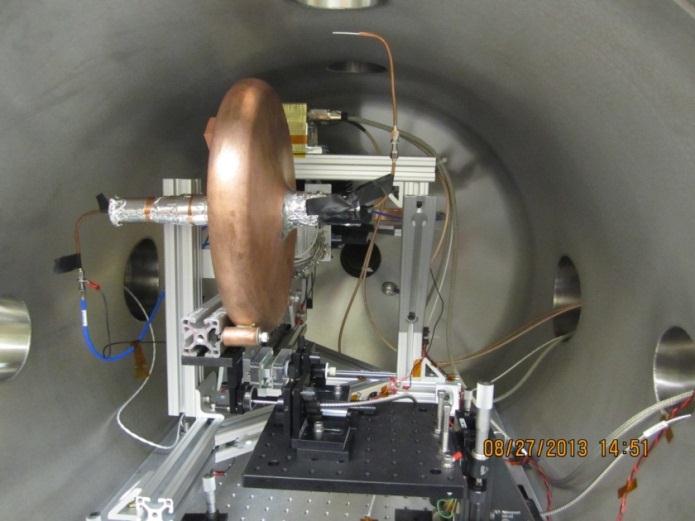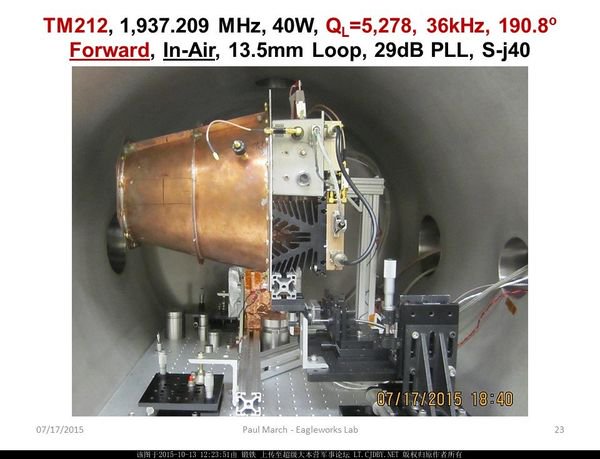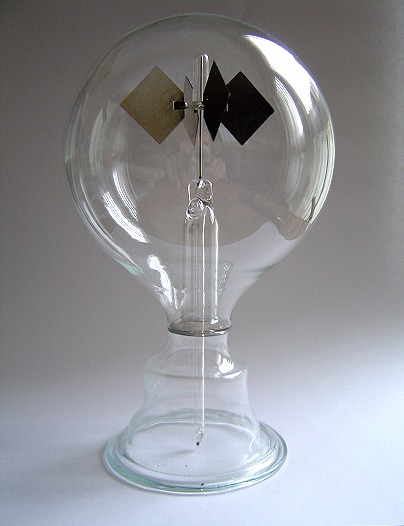|
Size: 2447
Comment:
|
← Revision 62 as of 2021-04-08 11:08:37 ⇥
Size: 9002
Comment:
|
| Deletions are marked like this. | Additions are marked like this. |
| Line 2: | Line 2: |
Note added [[ https://www.extremetech.com/extreme/321541-comprehensive-test-shows-impossible-emdrive-actually-is-impossible | 2021/04/08 ]] - Dr. Martin Tajmar's team at Dresden University '''[[ https://www.grenzwissenschaft-aktuell.de/latest-emdrive-tests-at-dresden-university-shows-impossible-engine-does-not-develop-any-thrust20210321/ | empirically demonstrates ]]''' that White's measured "thrust" is due to a temperature-caused ''tilt'' in the apparatus. That is more likely than my explanation below. Both the Tajmar explanation and mine are based on obvious thermal errors in White's experimental design. Richard Feynman taught us "The first principle is that you must not fool yourself, and you are the easiest person to fool." |
|
| Line 5: | Line 7: |
| One bit of dodgy research is "quantum vacuum plasma thrusters", promulgated by Harold White's group at NASA's Johnson Space Center. There may be spooky new effects here, but their experiments are not nearly detailed or careful enough to actually measure them while ruling out more likely phenomena. | One bit of dodgy research is "quantum vacuum plasma thrusters", promulgated by Harold White's group at NASA's Johnson Space Center in Houston Texas. There may be spooky new effects here, but their experiments are not nearly detailed or careful enough to actually measure them while ruling out more likely phenomena. Replication by other researchers, and variation of vacuum pressure, configuration, temperature, emissivity, and other experimental parameters are required to find out what the alleged "thrust" is influenced by. |
| Line 13: | Line 15: |
| || 28 watts, diameter 11 inches ~= 14 cm radius || 40 watts (17 W in abstract), estimated diameter 12 inches || | || 28 watts, diameter 11 inches ~= 14 cm radius || 40 watts? (17 W in abstract), estimated diameter 12 inches || |
| Line 16: | Line 18: |
| || 230 = 0.1 * 4.567e-8 * ( T⁴ - (300K)⁴ ) || || ⇒ T = 492K ≈ 220° C || |
|| 230 = 0.1 * 4.567e-8 * ( T⁴ - (300K)⁴ ) Stefan-Boltzmann law || || ⇒ T = 492K ≈ 220° C "black" body temperature || |
| Line 19: | Line 21: |
| Note that Device 1 is anchored to the microwave source on the right; some heat will flow out the right side, so it will be colder than the left side. | The power must go somewhere, so the devices will get very hot, emitting heat only by black body radiation, and thermal conduction to the rest of the apparatus (which will also get warm). Because the devices are shiny, their black body emissivity will be low; I'm guessing 10%. Note that Device 2 is anchored to the microwave source on the right; some heat will flow out the right side to radiate from the rest of the apparatus, so it will be colder than the left side. |
| Line 21: | Line 23: |
| The experimental setup is messy. Nice stainless steel pressure vessel, but filled with outgassing materials. The authors describe a setup with two turbopumps (no cryopump or cold trap mentioned) that requires a few days to pump down to 5e-6 torr, or about 7e-4 Pascals. That is a poor vacuum for days of pumping, so something is outgassing. If the sensor is near the pumps, and outgassing sources are closer to the device, then the pressure could be significantly higher there; perhaps a few milli-Pascals. The pumps are running during the experiment; if the experiment was clean, that would not be necessary. | The experimental setup is messy. Nice stainless steel pressure vessel, but filled with outgassing materials. Plastic jacketed coax and wires. Lots of wires running through ports (normally, this is done with tungsten pins frit-sealed through glass. A black convection heatsink, whose vanes are '''useless''' in a vacuum, producing only more desorption? Is that black stuff '''adhesive electrical tape???''' |
| Line 23: | Line 25: |
| || {{ attachment:Crookes_radiometer.jpg | | height=400 }} || The device reminds me of a paddle in a [[ https://en.wikipedia.org/wiki/Crookes_radiometer | Crooke's radiometer ]], also known as a light mill, another device with slightly more heat on one side than the other. A detailed explanation [[https://doi.org/10.1115/IHTC14-22023 | here ]]. || |
The authors describe a setup with two turbopumps (no cryopump or cold trap mentioned) that requires a few days to pump down to 5e-6 torr, or about 7e-4 Pascals. That is a poor vacuum for days of pumping, so something is outgassing. If the pressure sensor is near the pumps, and outgassing sources are closer to the device, then the pressure could be significantly higher there; perhaps 2e-3 Pascals (WAG). The pumps are running during the experiment; if the experiment was clean, that would not be necessary. For comparison, the Large Hadron Collider (LHC) maintains a 3 kilometer ring (and lots of side experiments) at 1e-6 Pascals, and the Laser Interferometer Gravitational Observatory (LIGO) keeps two 4 kilometer long large-bore pipes pumped down to 1e-7 Pascals. I used high vacuum systems for sputter-depositing niobium to make Josephson junctions as a graduate student at UC Berkeley in the early 1970s; cleanliness was essential. || {{ attachment:Crookes_radiometer.jpg | | height=200 }} || The device reminds me of a paddle in a [[ https://en.wikipedia.org/wiki/Crookes_radiometer | Crooke's radiometer ]], also known as a light mill, another device with slightly more heat on one side than the other. A detailed explanation [[https://doi.org/10.1115/IHTC14-22023 | here ]].<<BR>><<BR>>A lightmill works because ever-so-slightly hotter gas forms on the black side of the paddle, and flows around the edges to the white/shiny side. That flow produces a tiny thrust, which moves the paddle. This was first properly explained by [[ https://en.wikipedia.org/wiki/Osborne_Reynolds | Osborne Reynolds ]] in 1889, with quantitative refinements by [[https://en.wikipedia.org/wiki/Martin_Knudsen | Martin Knudsen ]] in 1910 and Albert Einstein in 1924.<<BR>><<BR>>Imagine what a 200°C temperature difference might do in the White experiment, even if the gas pressures are somewhat lower than an optimized light mill.|| Modern hypersonic aerodynamics emerged from the work of Reynolds and Knudsen. The detailed quantitative understanding of radiometers led to the design of rockets and reentry vehicles that got us to the Moon and Mars. '''I bet that much of the "anomalous thrust" would vanish if the surfaces were black''', better infrared radiators, and colder. [[ https://phys.org/pdf333267680.pdf | NASA Goddard has done some interesting work on ultra-black, high emissivity surfaces ]]. It may also disappear with good vacuum technique, low-outgassing surfaces and frit-sealed port feedthroughs. There should be ionization vacuum gauges in all the remaining ports, providing some idea what the pressure gradients in the vacuum environment actually are. And that's the experimental flaws that show in the picture. This should be replicated in a university lab, and the "thrust" measured as the flaws are corrected. Handwaving "explanations" natter about "softening spacetime" so it can be "warped", somehow escaping well-proven general relativity. However, LIGO detects black hole mergers that briefly emit power levels of 3e49 Watts of gravitational energy, and follow Einstein's general relativity equation exactly; that is as "warped" as spacetime gets. 28 watts compared to 3e49 watts is like a flea fart (a few picowatts?) compared to a supernova (5e36 watts). It is amusing to compare this work to the [[ https://arxiv.org/abs/gr-qc/0009013 | Alcubierre warp drive ]], which reads like an intentional satire of FTL ideas ( "... Of course, in the region where r s ≃ R the tidal forces can be very large indeed ..."). All that is needed for an Alcubierre warp drive is universe-sized accumulations of "negative mass-energy", which makes black hole mergers seem like a flea fart. I suspect [[ https://www.youtube.com/watch?v=5q_z8BjiYng | Dr. Alcubierre ]] enjoys stirring up folks who don't understand physics. ------ Neil deGrasse Tyson said: ''If someone's going to discover a new law of physics, it's going to be because they're hanging out at the edges of what we've already explored, not because they did something on the tabletop. No one's going to take an inclined plane and some wooden blocks and a metal ball and come up with a new law of physics.'' -- in Talking About Life, 2010, Chris Impey ed. ------ '''In My Humble Opinion:''' If you want to go to the stars '''''really fast''''', digitize yourself and send the information at the speed of light, to be reconstructed at the far end by nanomachines you sent out beforehand. The journey will seem instantaneous, and the energy needed to relay your bits over fast distances surprisingly modest, if the relay dishes are large enough (and exquisitely well aimed). We are made of star ashes, carbon and hydrogen and oxygen and nitrogen, abundantly available throughout the galaxy. However we choose to tour the galaxy, ultra-long lifetimes require rebuilding our unrepairable brains from the atoms up. We don't need to bring our rotting meat puppets with us. We will expand into the galaxy with ordinary Newtonian and Maxwellian physics over a very long time. Exotic general relativity effects won't speed our journey, but we will use GR to achieve absurdly high precision in our methods. "Threading the needle" at interstellar distances, permitting new classes of extraordinarily trustworthy machines. The future belongs to the precise, patient and parsimonious. Perhaps I am wrong, and there is a real "quantum thrust" effect here that will get us to the stars, but my guess is that the Johnson Space Center is struggling for existence now that they cannot put Americans into space, and is grasping at any straw for publicity and funding. Goddard puts telescopes in space, and JPL puts landers on Mars; perhaps it is time to concentrate US space expenditures there. |
Anomalous Thrust
Note added 2021/04/08 - Dr. Martin Tajmar's team at Dresden University empirically demonstrates that White's measured "thrust" is due to a temperature-caused tilt in the apparatus. That is more likely than my explanation below. Both the Tajmar explanation and mine are based on obvious thermal errors in White's experimental design. Richard Feynman taught us "The first principle is that you must not fool yourself, and you are the easiest person to fool."
Fringe space fans flock to dodgy research; learning physics and engineering in order to exploit the wonders of proven scientific phenomena is too much like work, I suppose.
One bit of dodgy research is "quantum vacuum plasma thrusters", promulgated by Harold White's group at NASA's Johnson Space Center in Houston Texas. There may be spooky new effects here, but their experiments are not nearly detailed or careful enough to actually measure them while ruling out more likely phenomena. Replication by other researchers, and variation of vacuum pressure, configuration, temperature, emissivity, and other experimental parameters are required to find out what the alleged "thrust" is influenced by.
A paper here: Anomalous Thrust Production from an RF Test Device Measured on a Low-Thrust Torsion Pendulum
Their test devices are shown here:
Device 1 |
Device 2 |
|
|
28 watts, diameter 11 inches ~= 14 cm radius |
40 watts? (17 W in abstract), estimated diameter 12 inches |
Estimated area 0.123 m2, 230 W/m² |
Distribution of heat uncertain, |
Shiny, estimated emissivity 0.1 |
Temperature probably similar |
230 = 0.1 * 4.567e-8 * ( T⁴ - (300K)⁴ ) Stefan-Boltzmann law |
|
⇒ T = 492K ≈ 220° C "black" body temperature |
The power must go somewhere, so the devices will get very hot, emitting heat only by black body radiation, and thermal conduction to the rest of the apparatus (which will also get warm). Because the devices are shiny, their black body emissivity will be low; I'm guessing 10%. Note that Device 2 is anchored to the microwave source on the right; some heat will flow out the right side to radiate from the rest of the apparatus, so it will be colder than the left side.
The experimental setup is messy. Nice stainless steel pressure vessel, but filled with outgassing materials. Plastic jacketed coax and wires. Lots of wires running through ports (normally, this is done with tungsten pins frit-sealed through glass. A black convection heatsink, whose vanes are useless in a vacuum, producing only more desorption? Is that black stuff adhesive electrical tape???
The authors describe a setup with two turbopumps (no cryopump or cold trap mentioned) that requires a few days to pump down to 5e-6 torr, or about 7e-4 Pascals. That is a poor vacuum for days of pumping, so something is outgassing. If the pressure sensor is near the pumps, and outgassing sources are closer to the device, then the pressure could be significantly higher there; perhaps 2e-3 Pascals (WAG). The pumps are running during the experiment; if the experiment was clean, that would not be necessary.
For comparison, the Large Hadron Collider (LHC) maintains a 3 kilometer ring (and lots of side experiments) at 1e-6 Pascals, and the Laser Interferometer Gravitational Observatory (LIGO) keeps two 4 kilometer long large-bore pipes pumped down to 1e-7 Pascals. I used high vacuum systems for sputter-depositing niobium to make Josephson junctions as a graduate student at UC Berkeley in the early 1970s; cleanliness was essential.
|
The device reminds me of a paddle in a Crooke's radiometer, also known as a light mill, another device with slightly more heat on one side than the other. A detailed explanation here. |
Modern hypersonic aerodynamics emerged from the work of Reynolds and Knudsen. The detailed quantitative understanding of radiometers led to the design of rockets and reentry vehicles that got us to the Moon and Mars.
I bet that much of the "anomalous thrust" would vanish if the surfaces were black, better infrared radiators, and colder. NASA Goddard has done some interesting work on ultra-black, high emissivity surfaces. It may also disappear with good vacuum technique, low-outgassing surfaces and frit-sealed port feedthroughs. There should be ionization vacuum gauges in all the remaining ports, providing some idea what the pressure gradients in the vacuum environment actually are. And that's the experimental flaws that show in the picture. This should be replicated in a university lab, and the "thrust" measured as the flaws are corrected.
Handwaving "explanations" natter about "softening spacetime" so it can be "warped", somehow escaping well-proven general relativity. However, LIGO detects black hole mergers that briefly emit power levels of 3e49 Watts of gravitational energy, and follow Einstein's general relativity equation exactly; that is as "warped" as spacetime gets. 28 watts compared to 3e49 watts is like a flea fart (a few picowatts?) compared to a supernova (5e36 watts).
It is amusing to compare this work to the Alcubierre warp drive, which reads like an intentional satire of FTL ideas ( "... Of course, in the region where r s ≃ R the tidal forces can be very large indeed ..."). All that is needed for an Alcubierre warp drive is universe-sized accumulations of "negative mass-energy", which makes black hole mergers seem like a flea fart. I suspect Dr. Alcubierre enjoys stirring up folks who don't understand physics.
Neil deGrasse Tyson said: If someone's going to discover a new law of physics, it's going to be because they're hanging out at the edges of what we've already explored, not because they did something on the tabletop. No one's going to take an inclined plane and some wooden blocks and a metal ball and come up with a new law of physics. -- in Talking About Life, 2010, Chris Impey ed.
In My Humble Opinion: If you want to go to the stars really fast, digitize yourself and send the information at the speed of light, to be reconstructed at the far end by nanomachines you sent out beforehand. The journey will seem instantaneous, and the energy needed to relay your bits over fast distances surprisingly modest, if the relay dishes are large enough (and exquisitely well aimed). We are made of star ashes, carbon and hydrogen and oxygen and nitrogen, abundantly available throughout the galaxy. However we choose to tour the galaxy, ultra-long lifetimes require rebuilding our unrepairable brains from the atoms up. We don't need to bring our rotting meat puppets with us.
We will expand into the galaxy with ordinary Newtonian and Maxwellian physics over a very long time. Exotic general relativity effects won't speed our journey, but we will use GR to achieve absurdly high precision in our methods. "Threading the needle" at interstellar distances, permitting new classes of extraordinarily trustworthy machines. The future belongs to the precise, patient and parsimonious.
Perhaps I am wrong, and there is a real "quantum thrust" effect here that will get us to the stars, but my guess is that the Johnson Space Center is struggling for existence now that they cannot put Americans into space, and is grasping at any straw for publicity and funding. Goddard puts telescopes in space, and JPL puts landers on Mars; perhaps it is time to concentrate US space expenditures there.



